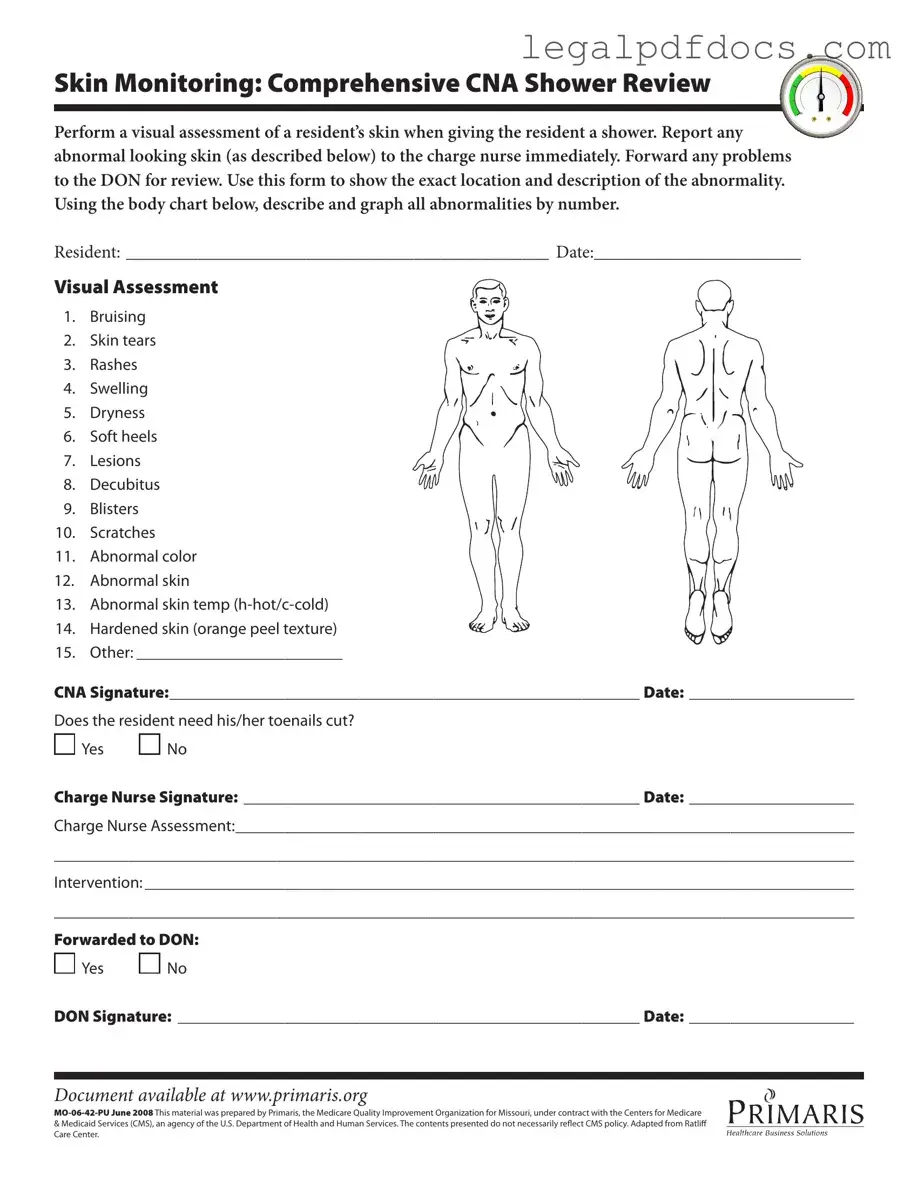The CNA Shower Sheets form plays a crucial role in ensuring the health and well-being of residents in care facilities. This form is primarily designed for Certified Nursing Assistants (CNAs) to conduct thorough skin assessments during showering. As part of their routine, CNAs visually inspect residents' skin for various abnormalities, such as bruising, rashes, and skin tears. Immediate reporting of any concerning findings to the charge nurse is essential, allowing for timely intervention and care. The form includes a detailed body chart where CNAs can accurately document the location and description of any skin issues observed. It also prompts CNAs to assess the condition of toenails, which can significantly impact a resident's comfort and mobility. The charge nurse is then required to evaluate the CNA's findings, and if necessary, further actions can be escalated to the Director of Nursing (DON). This systematic approach not only helps in maintaining skin integrity but also fosters a collaborative environment among the caregiving team, ultimately enhancing the quality of care provided to residents.
